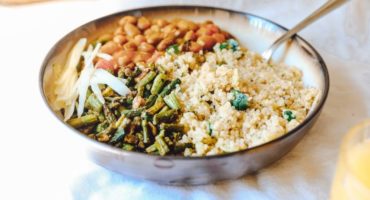

Study the ingredient list
Any product’s ingredients are listed in order of quantity – from highest to lowest. A good rule of thumb is to scan the first three ingredients, as they make up the largest part of what you’re eating. If the first ingredients include refined grains (eg. white flour), a type of processed sugar, or hydrogenated oils, you can assume that the product is not as healthy as it has been made out to be.
Take note of colours used on packaging
Colour psychology is big in food marketing. Colours are often used to communicate, signify or induce different ideas. For example, Green signifies organic, natural, eco-friendly; whereas Yellow is used to stimulate appetite and is associated with good mood.
When we got to the grocery store, we should take a moment to notice how the various colours appeal to us and what thoughts we have surrounding these foods. It is may become apparent that we are naturally drawn to specific colours, even though it’s something we wouldn’t ordinarily purchase.
Watch out for serving sizes
Sometimes small serving sizes are used to manipulate the nutrition information, whereas the amount we usually eat is a lot more. For example, an Oreo pack states the nutritional info for 1 biscuit, however most of us have more than 2.
Understanding terminology
There are some terms on food labels and packaging that suggest a product is healthy when it’s quite far from the case. Often, food manufacturers will use synonyms to hide the fact the product is full of rubbish. Here are some examples:
- “No added sugar”: Sure, but the naturally occurring sugar could still be very high.
- “Low fat”: In the UK, this term means the product must have less than 3g of fat per 100g. Most of the time, where fat has been reduced, sugar has been added.
- “Natural”: This does not necessarily mean that the product resembles anything natural. It simply indicates that at one point the manufacturer worked with a natural source like apples or rice!
- “Gluten-free”: This term does not always imply the product is healthy. The product simply doesn’t contain wheat, spelt, rye, or barley. Many gluten-free foods are highly processed and loaded with unhealthy fats and sugar.
- “Organic”: This is another one to look out for on packaged foods. Just because something is organic, doesn’t make it inherently healthy. For instance, organic chocolate is still chocolate.
I’m not saying that all food that comes in a box, a can, or a bag, is junk—just that a lot of it is. Learning to read nutrition labels with discernment is a crucial skill for anyone wishing to stay healthy in this day and age.

Plant-based wellness and nature’s top 3 remedies
Do you have to wear lycra to do yoga?
No you don’t. But as your body is moving through the various planes of motion, it’s easy to get lost in your clothes! So wear comfortable, form-fitting kit that doesn’t interrupt your yoga flow.
How can I do yoga if I’m not flexible?
Well, that’s the reason to do yoga, not to not do yoga! It doesn’t matter if you can’t touch your toes. Flexibility is not a prerequisite to do yoga. But the willingness to try something new is.




